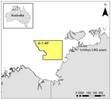Oil Spill Response Ltd. (OSRL) and the Subsea Well Response Project (SWRP) delivered a containment toolkit, which can be used to minimize the environmental impact of a subsea well incident.
 |
|
Image from SWRP. |
This news builds on the successful delivery of four subsea well capping stacks in 2013-14, designed to shut-in an uncontrolled subsea well.
The containment toolkit is designed to supplement standard industry well test hardware to create an innovative containment system. This toolkit comprises long-lead equipment not readily available in the current industry and minimizes response times by allowing a responding well operator to draw on existing resources. In rare scenarios where a well cannot be shut-in, the containment system can be used to flow hydrocarbons from a subsea well to the surface for safe storage and disposal.
During a response, the containment system can be assembled in one, two or up to three containment legs depending on the situational need, providing additional response flexibility.
This toolkit is stored in strategic locations to facilitate timely response around the world. Due to their size, the flexible subsea jumpers and subsea flowlines cannot be transported by air, so three sets are stored in the UK, Brazil and Singapore ready for onward transit. All other containment toolkit components are air-freightable and stored with the original equipment manufacturers in the UK, US and Norway.
Guidelines are also included in this toolkit to assist a well owner/operator in the development of a well-specific containment response plan.
The containment toolkit is now operational and available for industry use through membership of OSRL and a supplementary subscription to OSRL’s Subsea Well Intervention Services (SWIS). SWIS also includes access to capping stack systems to shut in a well and subsea incident response toolkits for debris clearance, site survey, BOP intervention and the subsea application of dispersant at a wellhead.
“The introduction of the containment equipment, in addition to the four capping stack systems strategically located worldwide, is an important part of preparation for emergency response to a subsea well incident,” says Robert Limb, OSRL chief executive officer. “While the industry’s commitment to safety means serious subsea incidents are thankfully exceptionally rare, it is vital that the industry regularly re-evaluates and updates its response capabilities with equipment like this.”



